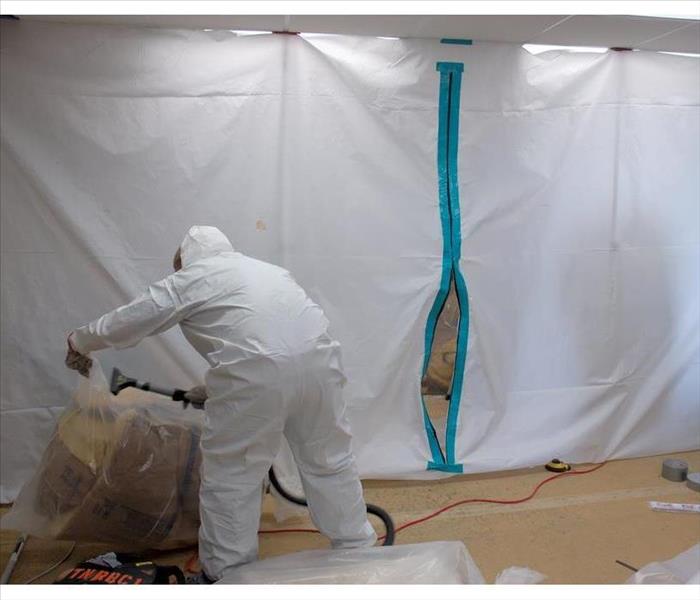What Is The Difference Between Mold Remediation and Mold Removal?
1/10/2023 (Permalink)
Mold remediation and mold removal are two terms that homeowners and renters may hear when there is a problem with mold in their home or apartment. While both terms refer to cleaning up an existing mold problem, these solutions differ significantly in how they are applied. It’s important to understand this difference in order to know what kind of work is required for removing the mold.
Water Damage and Mold Damage go Hand-In-Hand
Mold damage is a result of water damage. In other words, if there were no water involved in the first place, there would be nothing to worry about when it comes to mold growth.
It’s important that you know whether or not your home has been damaged by water (and by extension, mold) before you begin any remediation process on your own.
What is Mold Remediation?
Mold remediation is the process of removing mold from a building or structure. Mold remediation is not the same as mold removal, which involves ridding an area of all traces of the fungus.
Mold remediation entails ridding a space of mold-damaged materials and areas that have been affected by mold growth, while also addressing water leaks or moisture problems that may have contributed to the problem in the first place.
What is Mold Removal?
Mold Removal refers to the process of removing mold from a surface, usually a non-porous and semi-porous material. It also includes the removal of mold from an object. Mold removal does not include the removal of materials such as carpets, insulation, or drywall.
What is the Difference Between Mold Remediation and Mold Removal?
Mold remediation and mold removal are both processes designed to get rid of mold and the materials that have been contaminated with it.
Mold removal is a cleaning process, while mold remediation involves both a cleaning process and the disposal of contaminated items.
Containment is Essential to Mold Remediation
When it comes to mold remediation, containment is the first step. Without proper containment of a mold-infested area, subsequent steps in the mold remediation process will be ineffective. In fact, failing to isolate and contain the affected area can actually make matters worse by increasing the hazard to your home or business.
Why does containment matter in mold remediation? The answer lies in how mold spreads: through microscopic spores that are released into the air when you disturb contaminated materials. Containment helps prevent these spores from spreading further into other areas of your home or office building by preventing them from getting out into other parts of your living space or workspace.
Clean and Protect Areas Not Affected by Mold
Once you've cleaned up the mold and removed it from your home, you'll need to protect areas not affected by mold. It's also important to clean and disinfect these areas. This can be done using a disinfectant spray, wipes, or solutions.
You may want to consider using an aerosol spray bottle for clean-up if it's available at your local hardware store or online retailer. Aerosol cleaners provide ease of use because they're readily available and require no mixing of ingredients before application on surfaces in order to get the job done quickly!
Mold removal is the process of cleaning up the mold from your home or business. Mold remediation, on the other hand, is a more involved process that involves removing all traces of mold growth from an area and ensuring it does not come back. By knowing what type of work needs to be done in order for your property to be safe again, you will know whether or not hiring a professional company like ours makes sense for you!



 24/7 Emergency Service
24/7 Emergency Service
